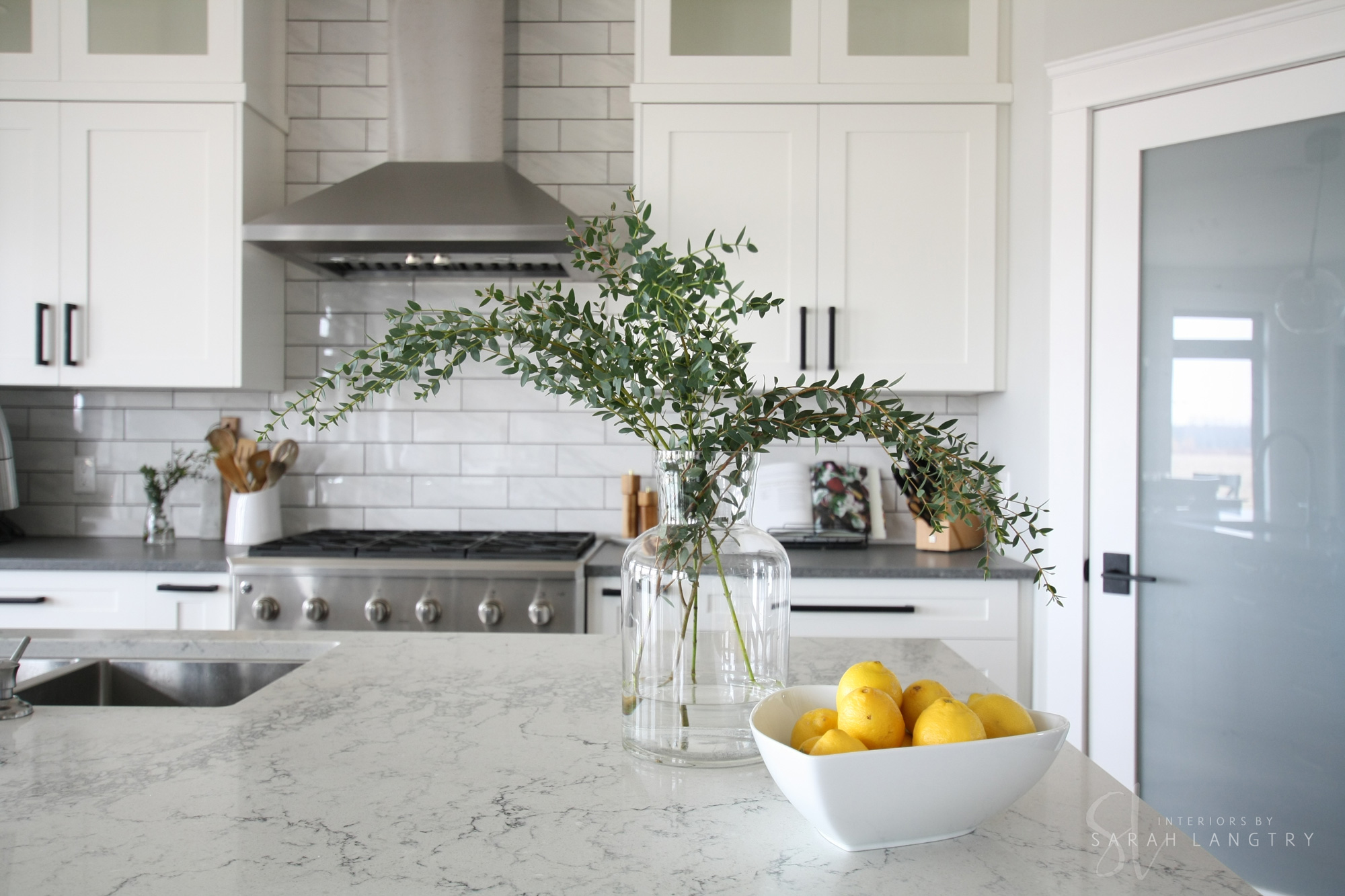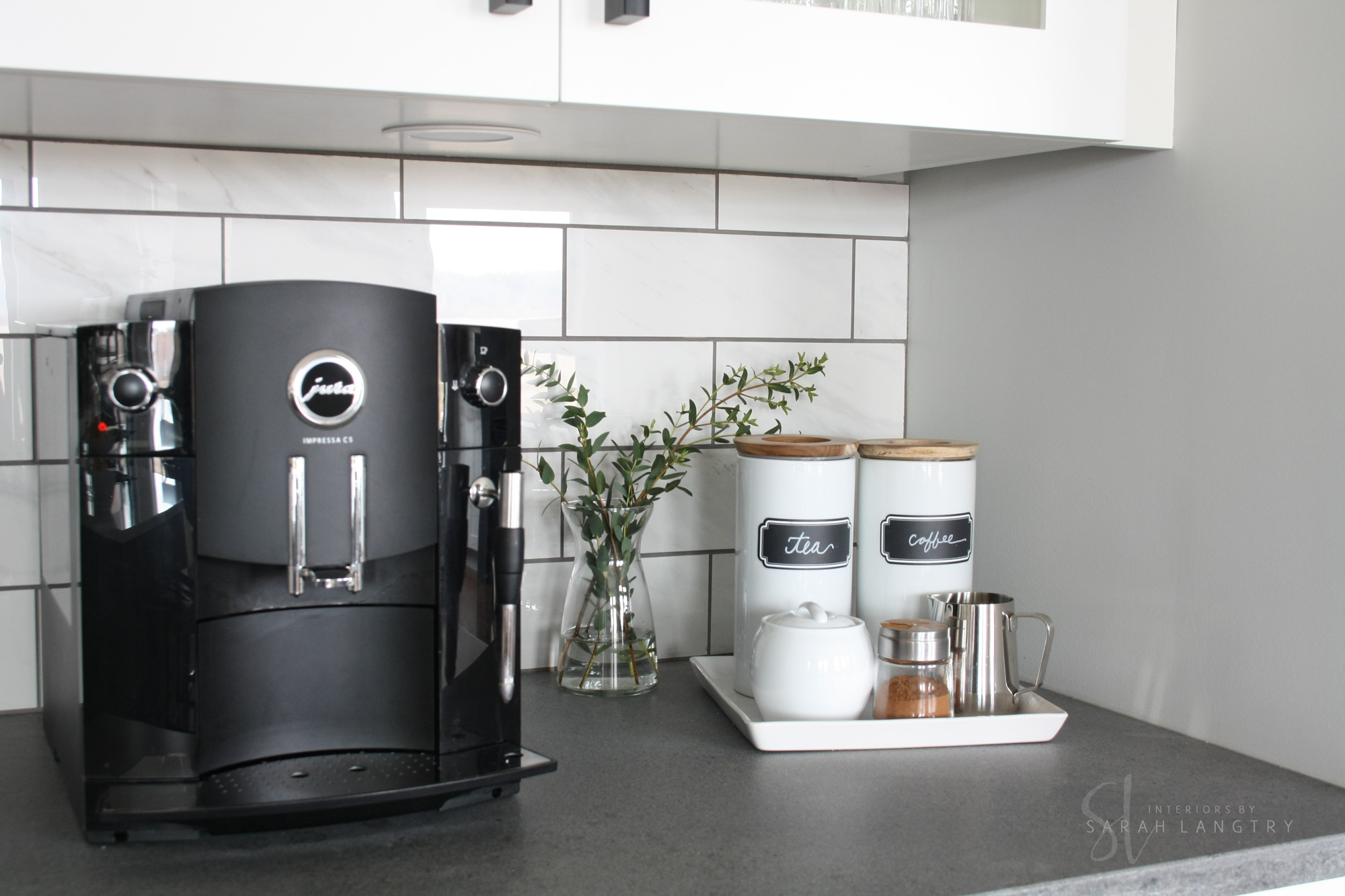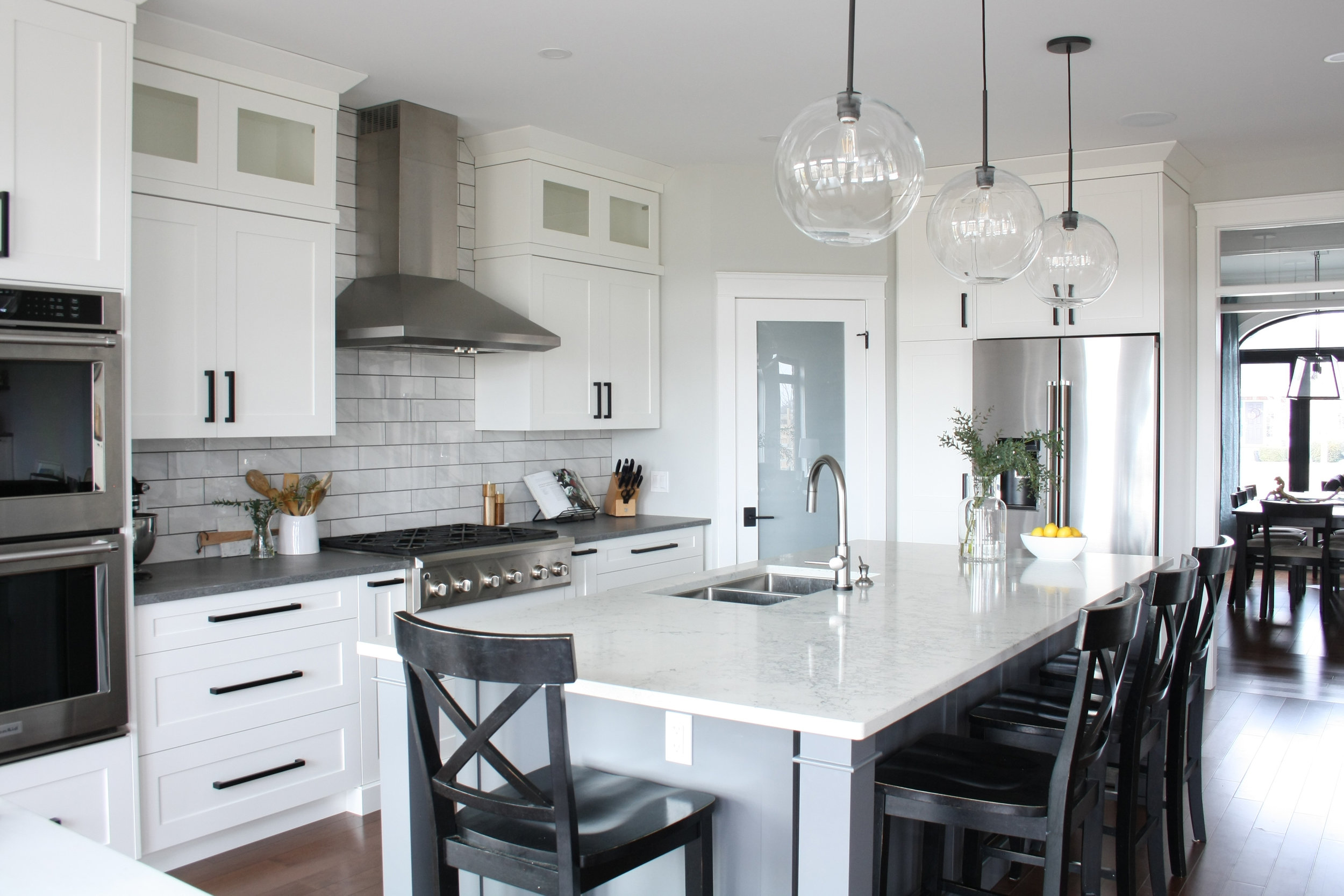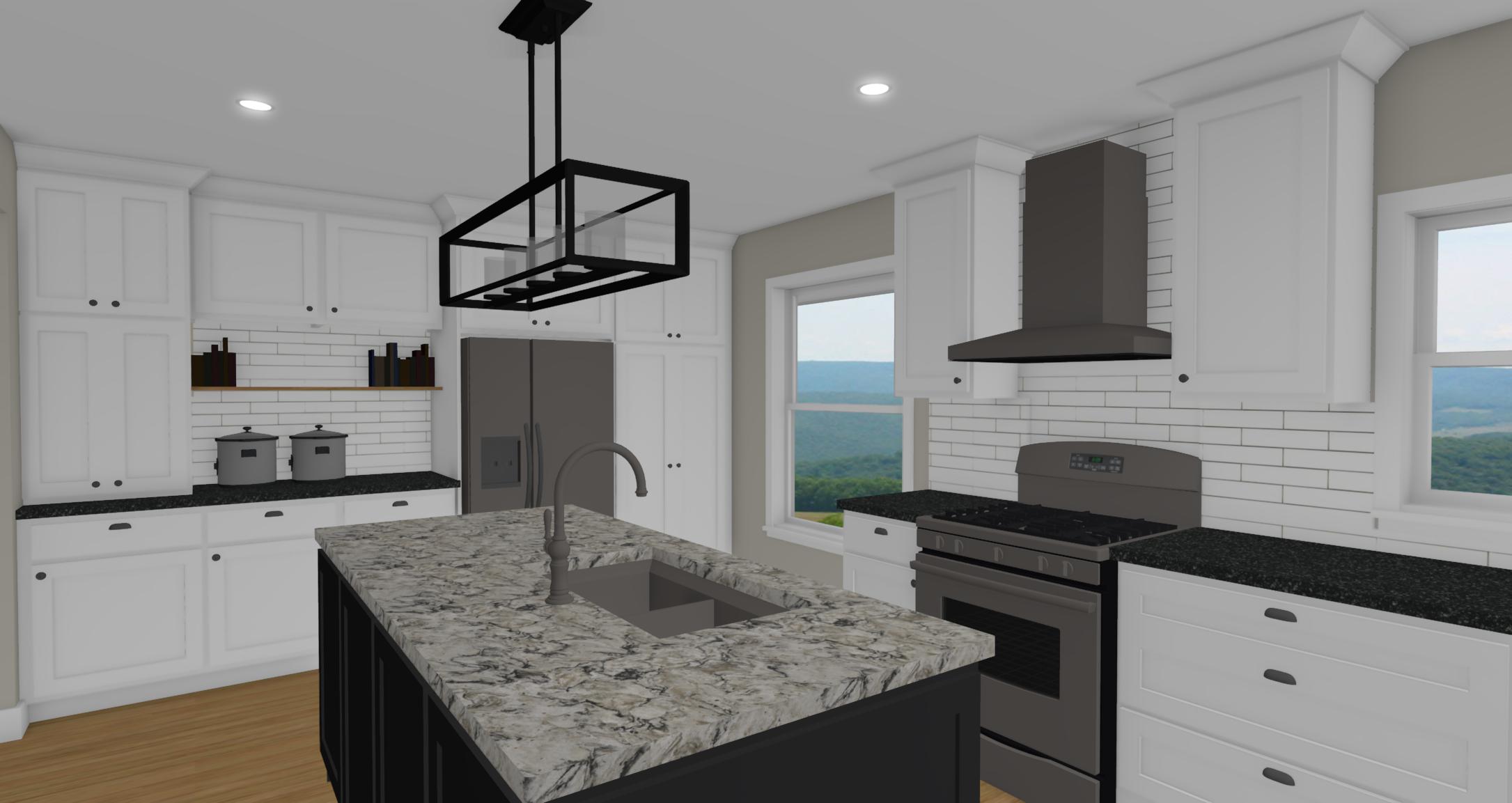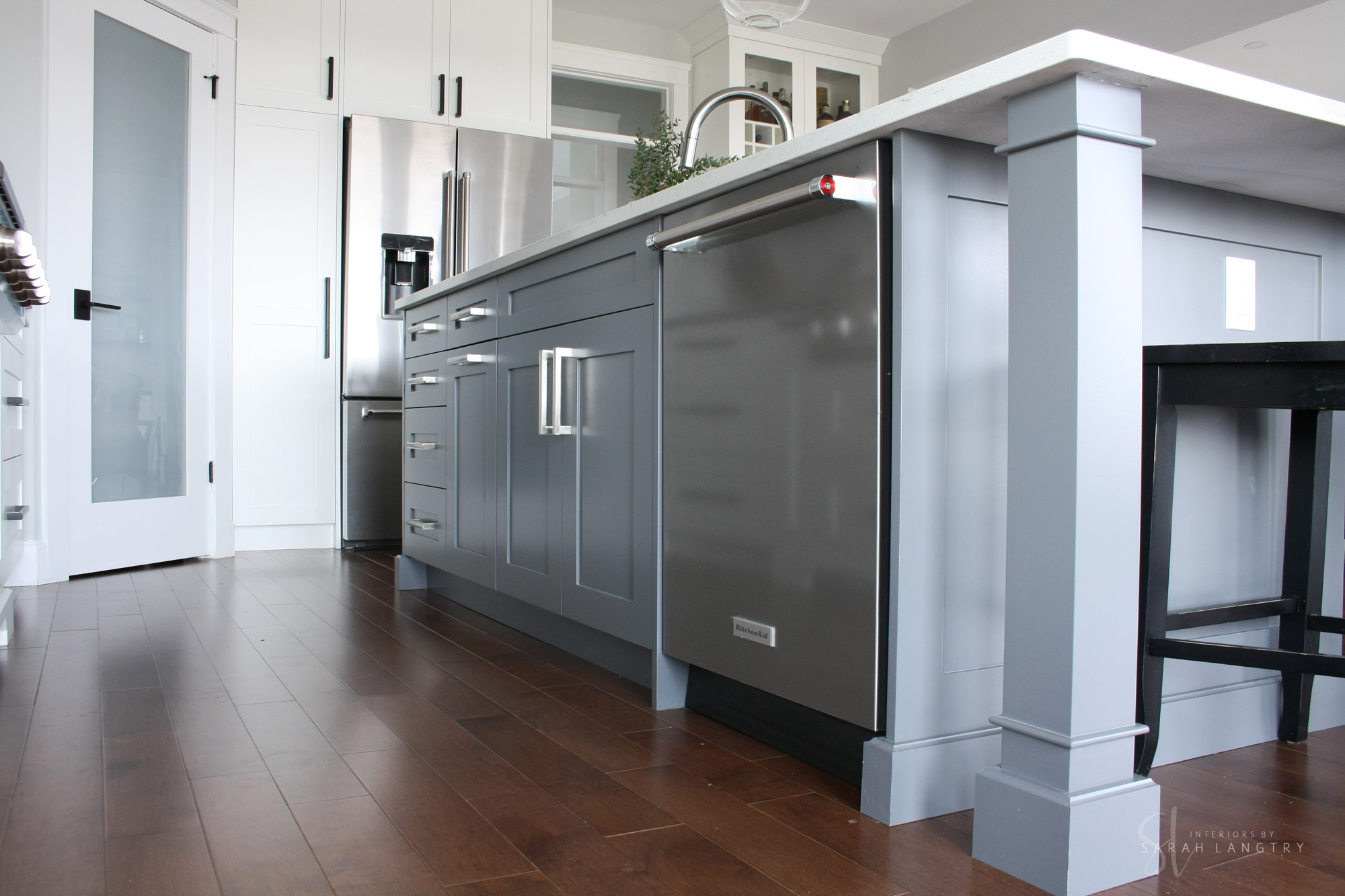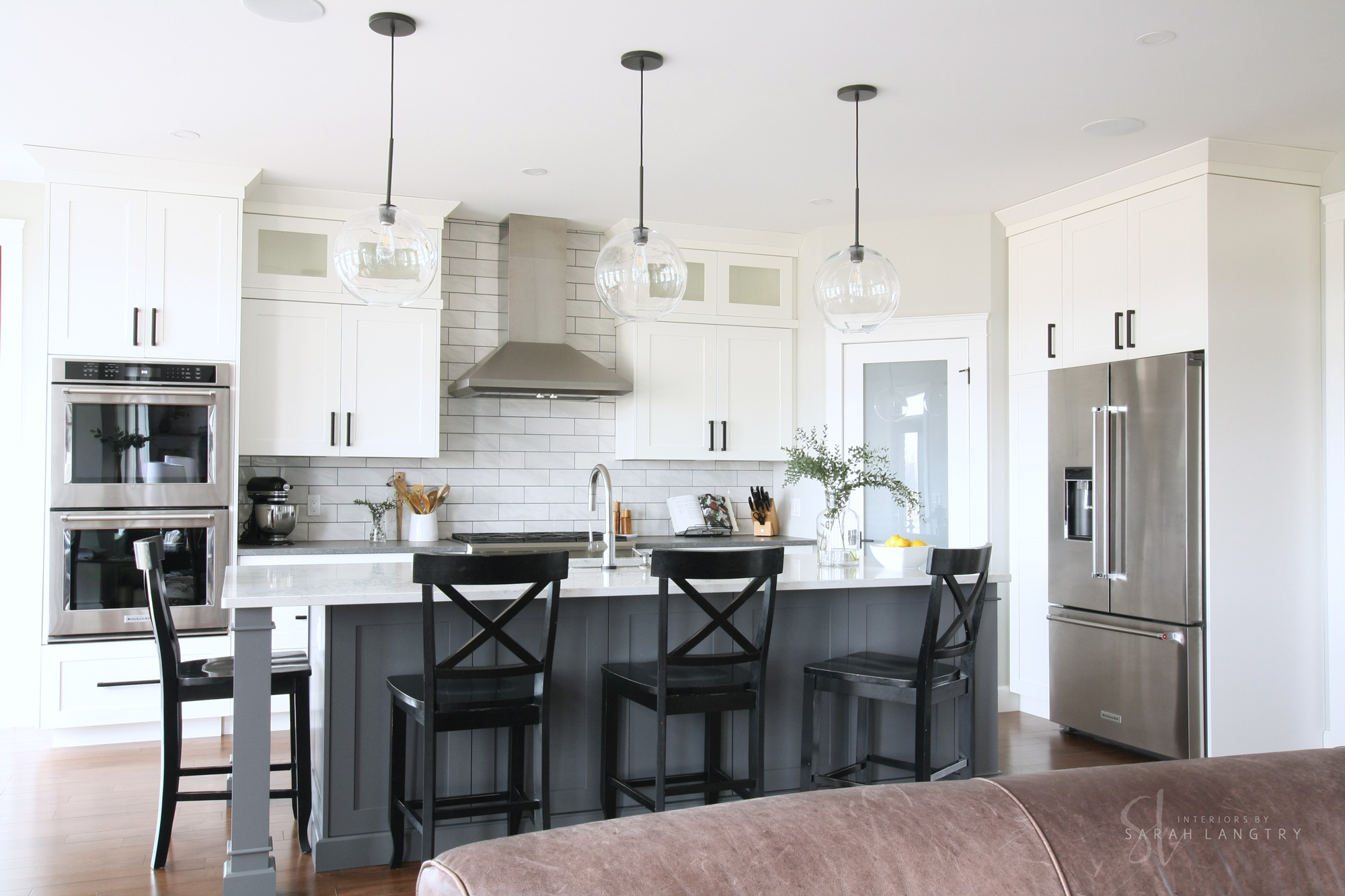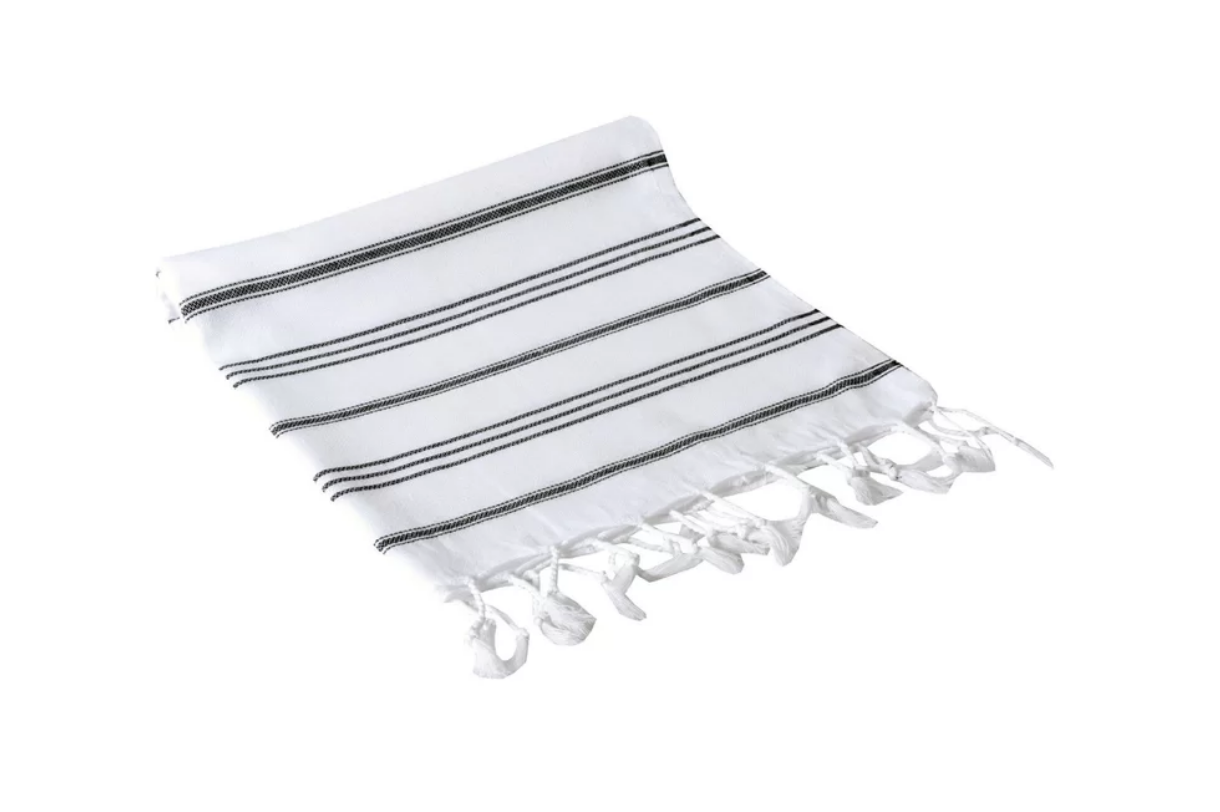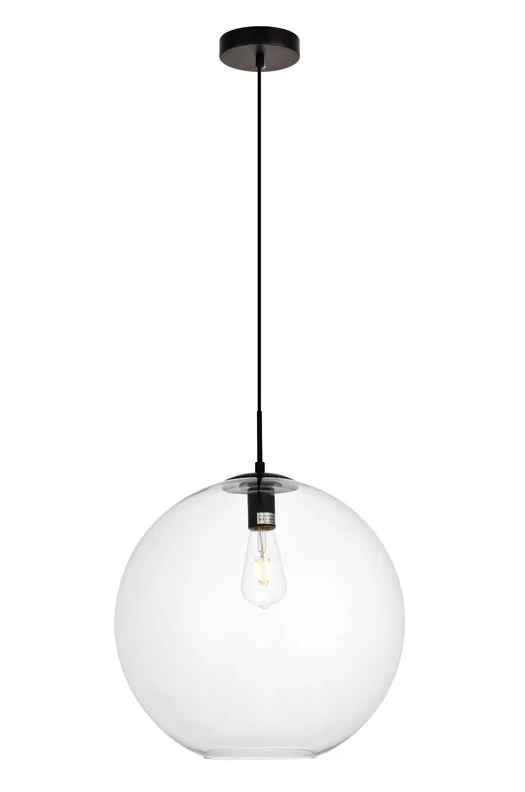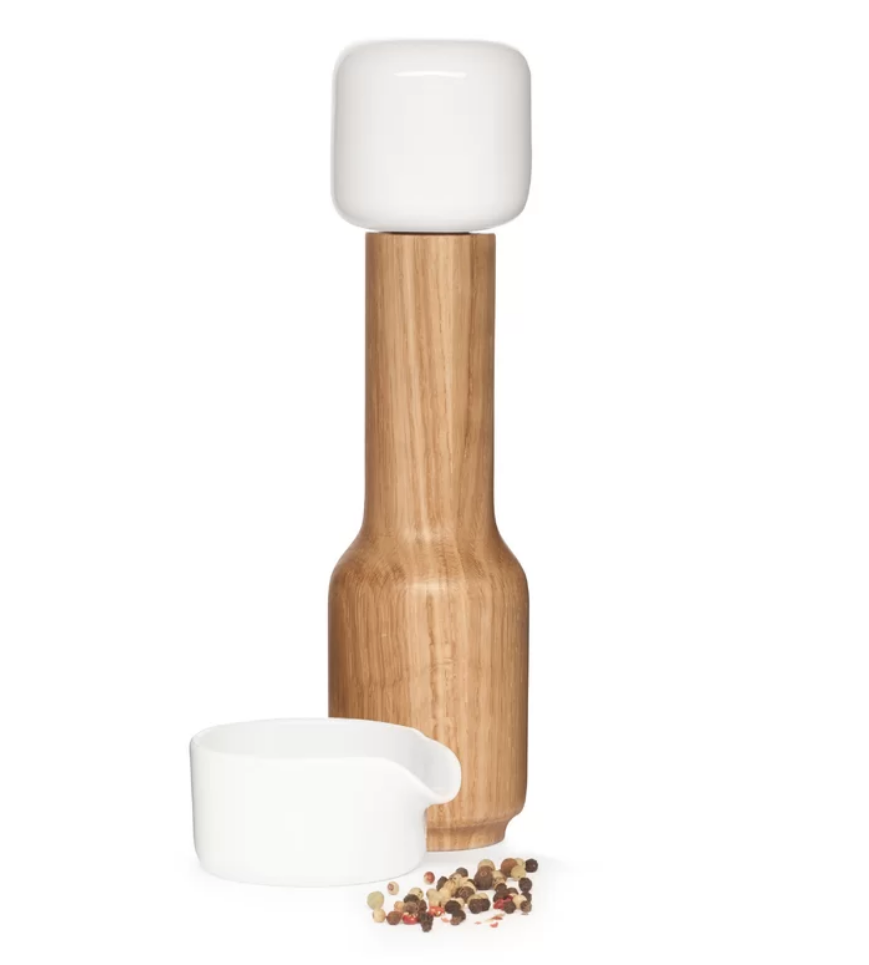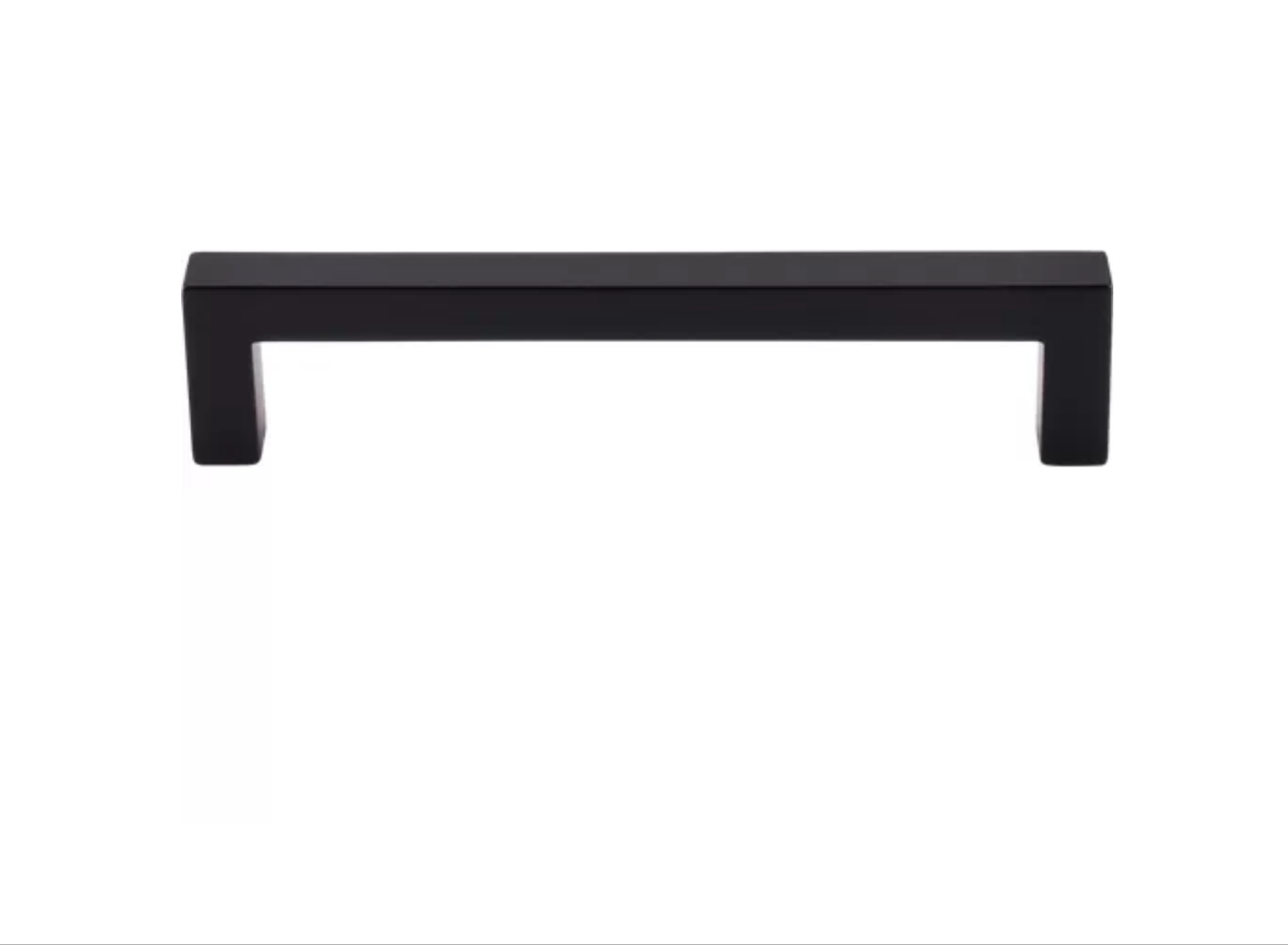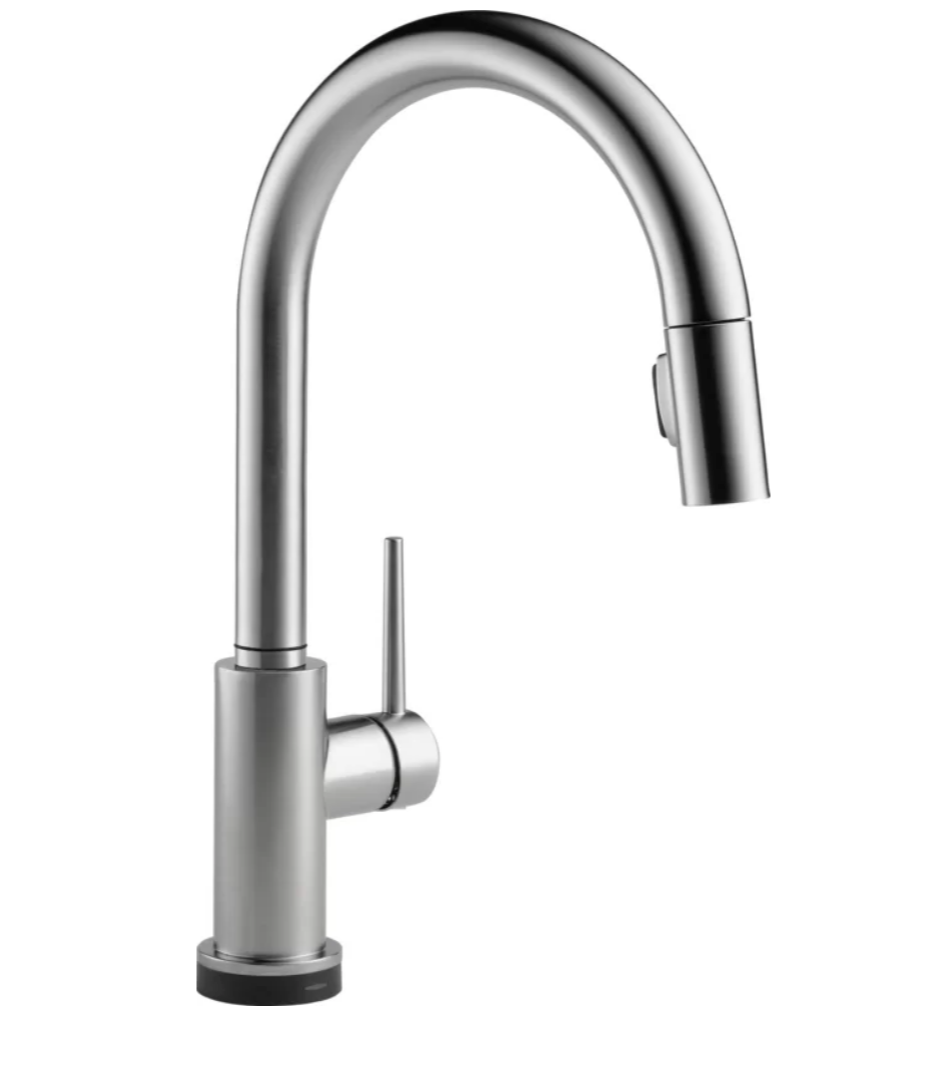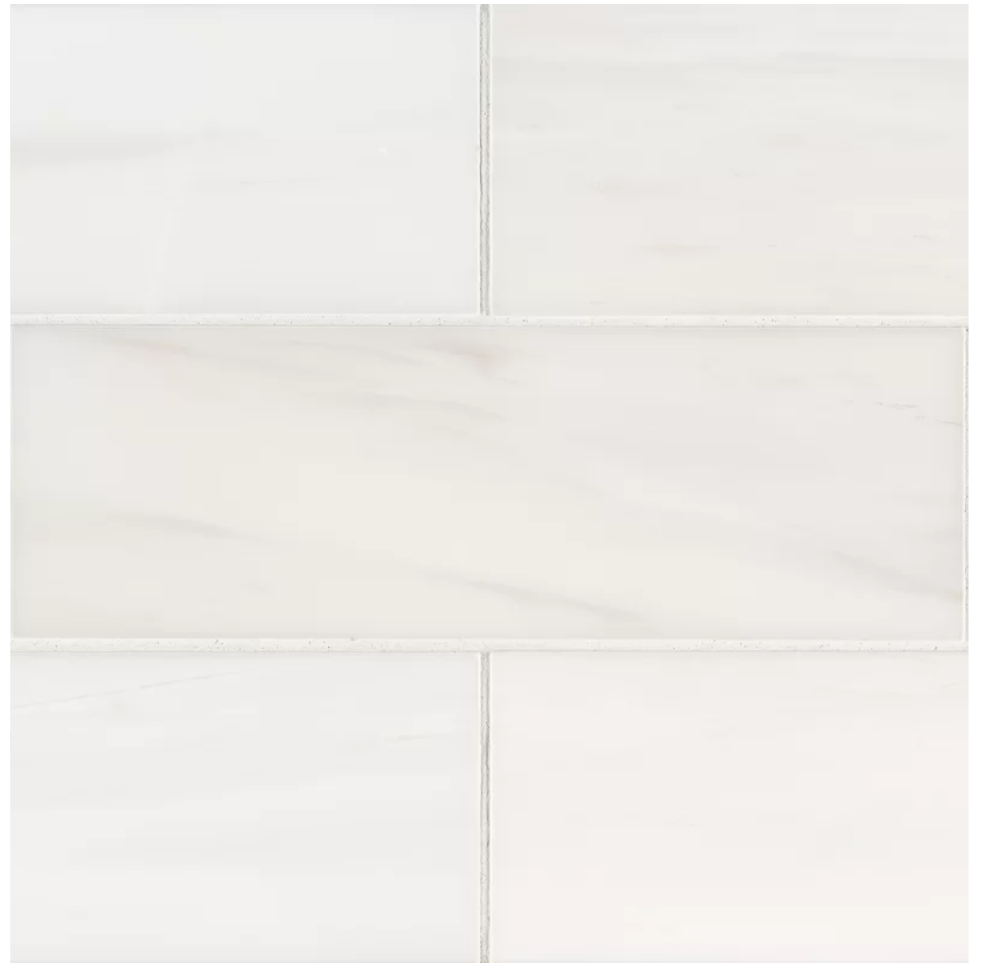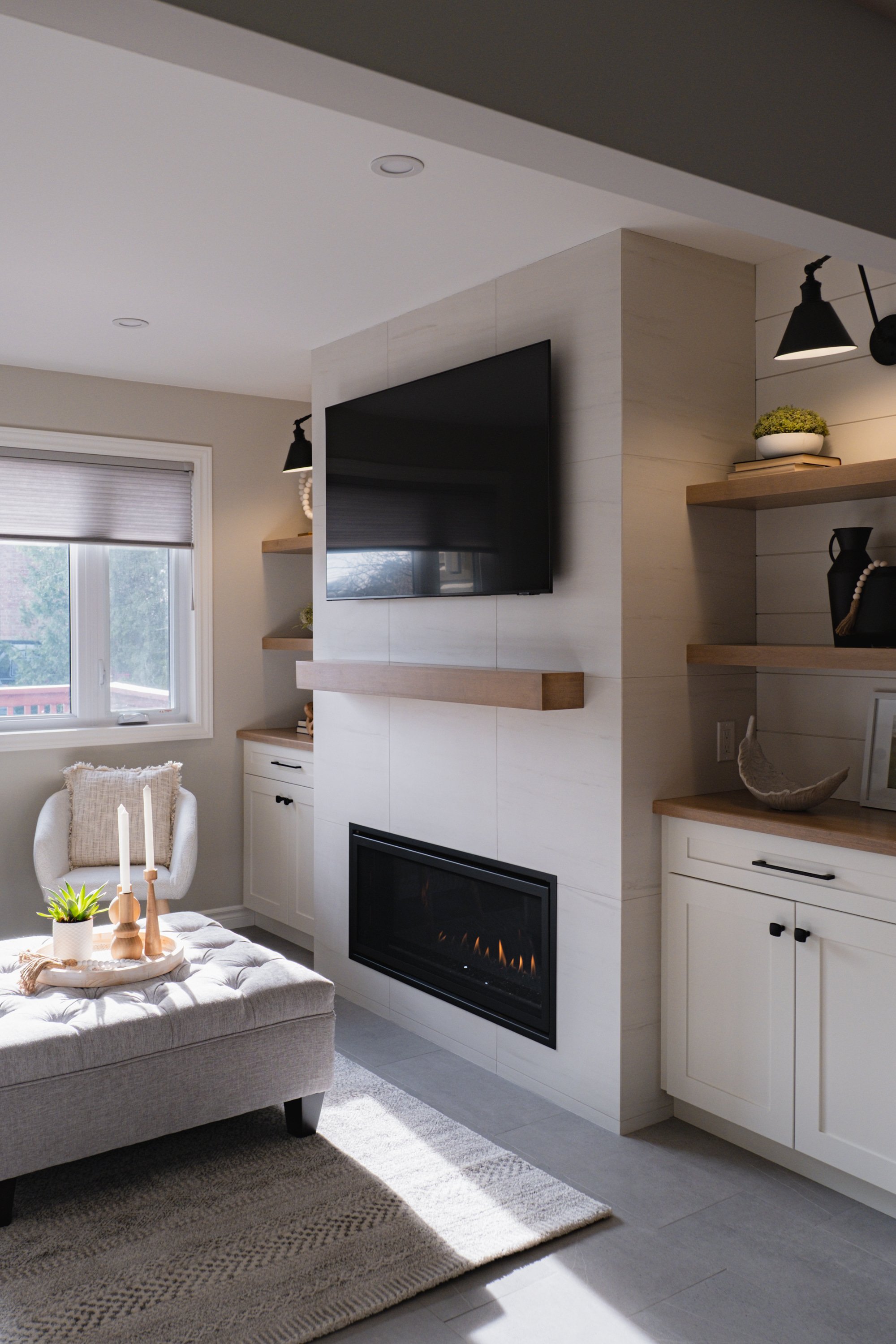6 DESIGN TIPS TO HELP YOU PLAN YOUR DREAM KITCHEN
I've helped design many kitchens over the years, but after recently completing my own kitchen design, I'm reminded at how important it is to really take the time to plan out your space! The kitchen is where we spend the bulk of our time while at home, and having a functional, well thought out design plan is crucial in order to create a kitchen that works for you and your family.
If you are planning a kitchen renovation, or are building a new home, I'm going to share with you my TOP 6 DESIGN TIPS to help you plan your dream kitchen. These are all very important points that need to be carefully considered before you begin your kitchen project.
function
#1. CONSIDER THE FUNCTION YOUR SPACE WILL SERVE
Probably THE most important aspect to think about when planning a new kitchen (or any space for that matter) is to determine what function you wish it to serve. You may be thinking "thats a silly question Sarah! I need a kitchen to cook." And yes, you are totally right. Cooking is the main function of a kitchen, however, over the years it has become so much more than that....it has become the heart of the home, a place where we gather and spend most of our time. Its become the single most important room in the house. Just think of all the things you do in your kitchen everyday! Besides cooking and eating in my kitchen , I also work, watch tv, read the mail, chat with my kids after school, help them with their homework, hang out with my friends, sip on a glass (or two) of wine after a long day. Now this may not be everything YOU wish to be doing in your space, and thats FINE. Thats why its so important to narrow down exactly what you see yourself doing in this space, and how to make it work for your family. Heres a few points to consider when thinking of the function of your kitchen.
- How do you plan on using it everyday? Does your everyday resemble mine where your kitchen is a busy place people hang out the most? Or do you prefer it tucked away and only have to use the kitchen when necessary, warming up leftovers or washing out your empty wine glasses?
- Besides cooking, what other daily activities do you like to do in the kitchen? If you have kids, do they work on homework while you are prepping dinner? Or do you like to research the hottest recipes on pinterest while siping your morning coffee? Do you like to catch up on the latest Housewives Of New Jersey episode while baking cookies? You may want to consider adding a dedicated space for a small desk, tv or dropzone.
- Do you like to entertain? If you often find yourself hosting friends for wine and cheese, or an afternoon cup of coffee, you may want to think about a dedicated place for a beverage center that houses a wine fridge, wine glasses, or a coffee bar.
- How much seating do you need? Most kitchens nowadays are eat in kitchens and have an area for an everyday family table, but if you are someone who likes to entertain, or want a more casual place to chat with your kids over an afternoon snack, you may wish to consider adding additional seating around an Island or peninsula.
the work triangle
#2 TAKE INTO CONSIDERATION THE WORK TRIANGLE
One thing to consider when planning your kitchen is the flow of your workspace, or as we in the design world like to call it, the work triangle. The work triangle is the distance between your stove, refrigerator and sink. A good triangle will result in an efficient workflow and allows you to move with ease between the 3 most used points. A poor work triangle will cause you to run all over your kitchen to access the most important aspects of your kitchen. Imagine running across the room to empty a steaming pot of boiling noodles. Not so user friendly. Heres an example of what the work triangle in my kitchen looks like. (Note I have 2 as there are 2 separate cooking points)
One thing to keep in mind is the distances between each point in your triangle. Theres no hard and fast rule, but I like to keep each edge of the triangle somewhere between 40" - 60". Your kitchen designer or interior designer will be bale to help you plan out the best clearances between your points based on your particular layout.
storage
#3 PLAN FOR AN ADEQUATE AMOUNT OF STORAGE
One of the major complaints I hear from clients looking to renovate their kitchen is the lack of storage their current space has. Even the smallest kitchen can maximize their storage by utilizing smart storage solutions.
If you use small appliances regularly, think about where would be the easiest place to access them. Maybe create an appliance garage with doors that retract, or build a large pantry with pull-out drawers to easily lift out the intant-pot. (hands down one of my favorite appliances!) A recent client uses 2 of them almost daily, so we created a niche next to the pantry where they can sit without using up counter space.
Other storage solutions that can make your kitchen function with ease could be pots and pans drawers, pantries with pull-out shelves, or walk-in pantries. Think of what items you use quite often and where the most convenient place to house them would be. I love cooking with lots of herbs & spices, so I had pull-out spice drawers installed right next to my cooktop. I can easily find what I need without leaving the stove. Also take advantage of spaces that might not be too easily accessible to house items you don't use everyday. I added hidden doors under the seating area at the Island to store all my good serving pieces. They only come out when entertaining, so even though the location isn't best for everyday use, its perfect for accessing every now and again.
lighting
#4 LET THERE BE LIGHT!
It seems simple, but having the right amount of light in your kitchen is so important. It amazes me how often this design element is overlooked!! I always, always, always create electrical layouts to accompany my clients kitchen drawings and recommend the following 3 types of lighting in a kitchen.
- General Lighting. This is what lights up the entire space. I usually recommend recessed pot lights for general lighting as its the best way to evenly disperse light throughout the room. Add dimmer switches and they can be easily dimmed for parties, or if you just want to set the mood for that romantic dinner *wink wink*. Pendant lights over islands, or chandeliers over tables are also an example of general lighting, but we tend to use more statement pieces here that lend a decorative touch.
- Task Lighting. Just as it sounds. Lighting that helps preform certain tasks. Under-cabinet lighting is an example of task lighting that a lot of people tend to skip, and its so important! Shadows from overhead lighting can often be cast underneath the cabinets, making prep work on the counters difficult, even dangerous if your finger didn't see the blade of the knife coming! ouch! Integrating your lighting within your cabinet design will lead to a seamless look. Another place that task lighting is often overlooked is over the sink. I cant tell you how many times I've chatted to acquaintances who always end up having to bring electricians in after their reno or new built to install a light over the sink. A costly planning mistake.
- Accent lighting. This is the lighting thats not really necessary for function, but highlights the wonderful design of your kitchen, which you are going to want to show off! Uplighting, or lighting in glass cabinets are a great example of accent lights. Under cabinet lighting is necessary for tasks, but can also accent your upper cabinets and countertops beautifully.
appliances
#5. CHOOSE YOUR APPLIANCES AHEAD OF TIME
Until you know what kind of appliances you want to put in your kitchen, you wont be able to properly determine your layout. If you like to cook as I do, you may want to opt for a 6 burner stove or cooktop. Do you prefer gas or electric? When choosing your range or cooktop, there are stand alone options that usually have the controls at the back, or slide in options with the controls at the front. What kind of range hood do you prefer? An insert or a chimney hood? If you are a baker, double wall ovens may be the way to go. Refrigerators also widely vary in size and depth. You can get counter-depth options for a more built-in look, standard depth, or builtin appliances that can be covered with door fronts that match you cabinetry for a seamless look. Do you use your microwave a lot? You may want to invest in a built-in option. As you can see there are so many options available for appliances that factor into the overall design of your kitchen. A designer can help you make the choice as to which type of appliances are the best fit for you and your lifestyle.
materials
#6 SELECT THE HIGHEST QUALITY OF MATERIALS YOUR BUDGET WILL ALLOW
You didn't think I would leave without mentioning the fun part did ya?! The materials and finishes you select for your kitchen will ultimately dictate the look and feel of the room, but more importantly will determine the longevity of the space. If you are going to invest in renovating your kitchen, or building it from scratch, you want your new space to not only look good, but last the test of time. Try to put in as many high quality materials as your budget allows. Really research the construction of your cabinets and the quality of materials your cabinet builder uses, and make sure to ask lots of questions! The vertical surfaces, or countertops, get the most wear and tear. I always suggest splurging on stone or quartz countertops as they are the most durable option. If you are confused about the different options for stone & solid surfaces, here's a quick rundown:
- Quartz. A combination of minerals, color & resin, quartz is the most durable surface available. Its has the beauty of natural stone, but is non-porous so it stands up to scratches and stains really well, and is fairly heat resistant. In my kitchen I went with quartz counters by Caesarstone in Montblanc (Island) and Rugged Concrete (perimeter).
- Granite. Unique in that each slab you choose has variations in color and veining, granite is a great option for a unique countertop. Its heat resistant and extremely durable but does require annual sealant in order to keep the stains at bay.
- Marble & Soapstone. These natural stones are simply gorgeous and offer beautiful veining, but they are softer than granite and definitely more susceptible to staining, so wine and coffee drinkers beware! A lot of quartz products are made now that mimic the look of natural marble and soapstone, but offer more durability.
- Solid Surfaces. A mix of acrylic and polyester resins, solid surfacing (widely known as Corian) comes in many different colors and can be molded in many shapes and sizes. It lacks the natural beauty of quartz or stone, but is stain resistant. Scratches are easily buffed out, but its not heat resistant so you will not be able to place hot pots on the surface.
As you can see there are many factors involved in planning out your dream kitchen. I hope you found these 6 tips useful and wish you the best of luck with your project!


